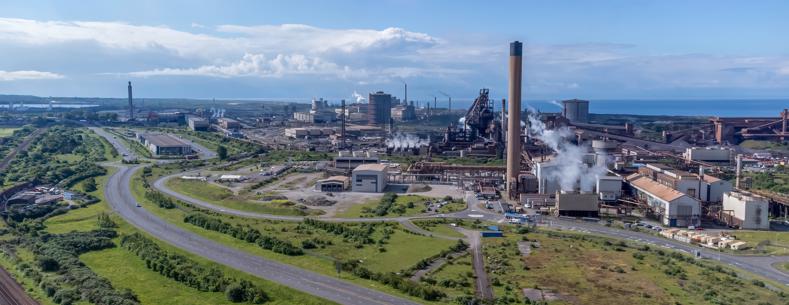Last week, the UK Government announced details of its deal with Tata Steel on the future of steelmaking at Port Talbot.
Under the agreement, a new Electric Arc Furnace will be built at Port Talbot, which Tata says will “secure the future of steelmaking” and preserve 5,000 jobs across the UK. However, the remaining blast furnace at Port Talbot will close by the end of this month, and, as under the original proposals, up to 2,800 workers face redundancy across Tata’s UK sites over the coming months and years.
While the UK Government’s Secretary of State for Business and Trade, the Rt Hon Jonathan Reynolds MP, described the deal as “much improved” from the agreement the previous UK Government struck with Tata last year, he said that it “falls short of what would be my ideal”.
So what’s in the deal, how does it differ from the agreement the previous UK Government made with Tata, and what’s been the reaction?
What’s in the deal, and how does it differ from the previous one?
As was the case under the agreement between the previous UK Government and Tata, the UK Government will contribute £500 million towards Tata replacing its two blast furnaces with an Electric Arc Furnace. There are a number of new announcements in the deal agreed last week:
- Tata will offer workers at risk of compulsory redundancy a comprehensive training programme as an alternative, providing recognised qualifications. Under this programme, Tata will pay workers their full salary for the first month, and the equivalent of £27,000 per year for the following 11 months.
- Tata is running a voluntary redundancy package which will provide 2.8 weeks’ earnings for each year up to 25 years. There will be a minimum payment of £15,000 pro-rata for each worker who takes voluntary redundancy, and a ‘retention’ payment of £5,000.
- The grant funding agreement has a mechanism to claw back investment if Tata does not fulfil its commitments. If Tata does not continue to employ 5,000 workers across the UK beyond the transition, it will have to pay £40,000 of the grant back for each job that is not retained below this level.
- Tata will be releasing 385 acres of its Port Talbot site for sale or transfer to other employers.
- Tata has committed to work with the UK Government to evaluate new investments in steel, and a process has been agreed to take this forward.
How does the deal compare to the different proposals made, and what’s been the reaction?
When in opposition, the Secretary of State for Business and Trade Jonathan Reynolds MP criticised the previous UK Government for “spending half a billion pounds to make thousands of British steelworkers redundant”, and said that for the remaining blast furnace “to close now, as we await the arrival of new technologies, is an act of economic vandalism”.
The Secretary of State has described the new deal as “a better deal for Port Talbot than was on the table, and it is the maximum improvement we could make in two months”. However, he also said that, if he had been in position to start negotiations a year ago, “I have no doubt that we would have secured an even better deal for the community”.
Both the Welsh Government and Senedd had also called for the retention of primary steelmaking in Wales. The Senedd unanimously passed a motion in June saying that retaining the capacity to produce primary steel is central to Welsh economic interests and the pathway to net-zero. The Senedd’s Economy, Trade and Rural Affairs Committee called for the UK Government to prioritise securing the continued operation of blast furnace 4 through a transition period. The First Minister has said that the Welsh Government will work with the UK Government to support workers and provide a new future for steel production in Wales.
The steel unions had also called for a blast furnace to be retained throughout a transition. Community and the GMB both endorsed the multi-union plan developed by Syndex, while Unite developed its own Workers’ Plan for Port Talbot. In a joint statement responding to the deal, the Community and GMB unions said that the decision by Tata to reject the multi-union plan was a “tragic missed opportunity” to secure “a just transition for the workforce”. They added that, while the deal is “not something to celebrate”, they view it as a better outcome than the agreement made between Tata and the previous UK Government. Unite has said that the inaction of the previous UK Government means that “investment is being committed much later than it should have been”.
What support will be available for the workforce and the wider community in Port Talbot?
As outlined earlier, Tata will offer a voluntary redundancy package, and provide support for workers at risk of compulsory redundancy. It also expects to employ 500 workers on the construction of its new Electric Arc Furnace.
The Transition Board will receive £80 million UK Government funding and £20 million from Tata. Last month, the Board allocated £13.5 million of this money. This will support local businesses whose main customer is Tata, and help workers affected by the transition to retrain and acquire new skills.
The Welsh Government will provide support to affected workers through the ReAct+ and Communities for Work+ programmes, and has allocated £2 million to expand eligibility for Personal Learning Accounts to Tata and supply chain workers. It will also support people looking to set up their own business through Business Wales, and the Development Bank of Wales may be able to help supply chain businesses.
The First Minister has said providing a bridge from redundancy to new opportunities will be critical, and that her longer-term vision is a transition to net-zero industry based on new infrastructure. She said the UK and Welsh governments will need to collaborate on Floating Offshore Wind and the Celtic Freeport to offer future opportunities to Tata workers and contractors.
And what about future support for the steel industry?
The UK Government is developing a new steel strategy for publication in spring 2025, and will invest a further £2.5 billion in the industry. Suggestions made by unions for future investment at Port Talbot include a plate mill to make Floating Offshore Wind turbines. Tata has also said it will consider the case for a Direct Reduced Iron plant if business conditions and government investment are right.
Analysis by UK Steel highlights that UK steel producers pay up to 50% more in electricity costs than competitors in France and Germany. The British Industry Supercharger introduced by the previous UK Government reduced electricity prices for steel producers, however the Secretary of State for Business and Trade says more can be done. He added that more detail on the UK Government’s plans in this area will be available in its budget or spending review.
The agreement finalised last week addresses the uncertainty around the immediate future of Port Talbot. Against the backdrop of blast furnace steelmaking ending at Port Talbot and forthcoming redundancies, steelmaking communities in Wales and beyond will wonder what the longer-term future holds, and what potential new investment there may be in the industry.
Article by Gareth Thomas, Senedd Research, Welsh Parliament






